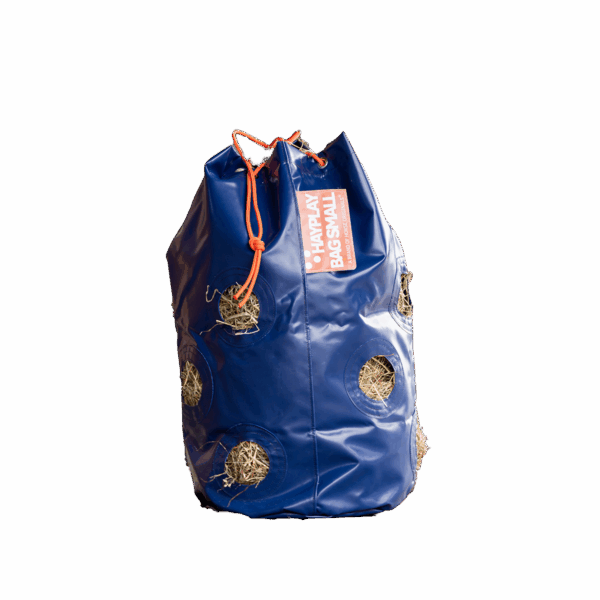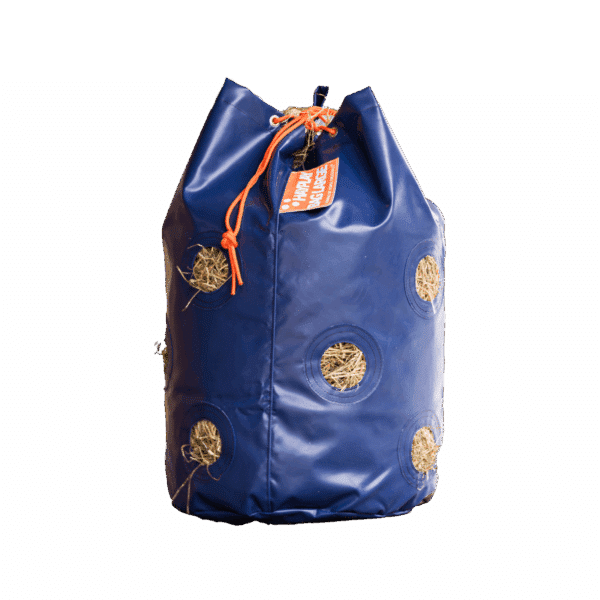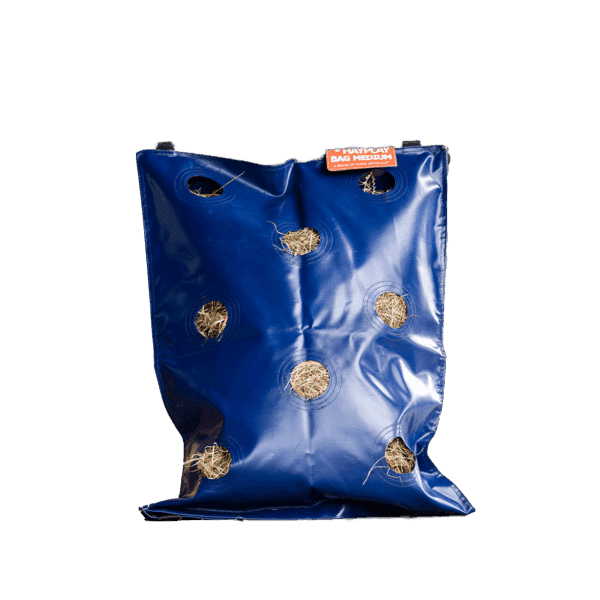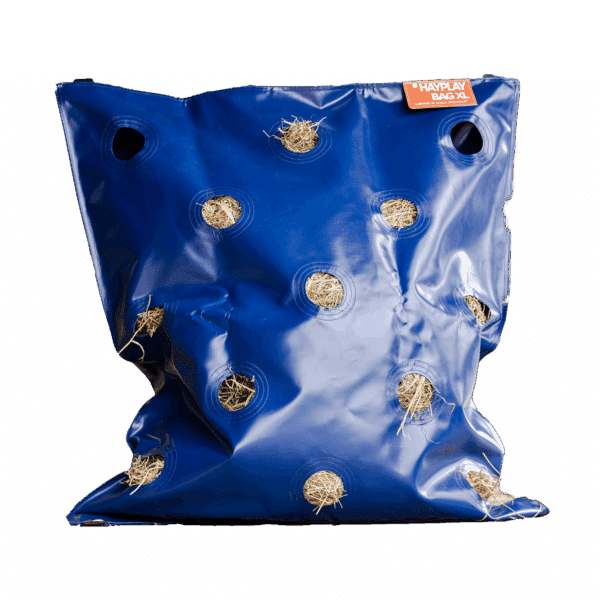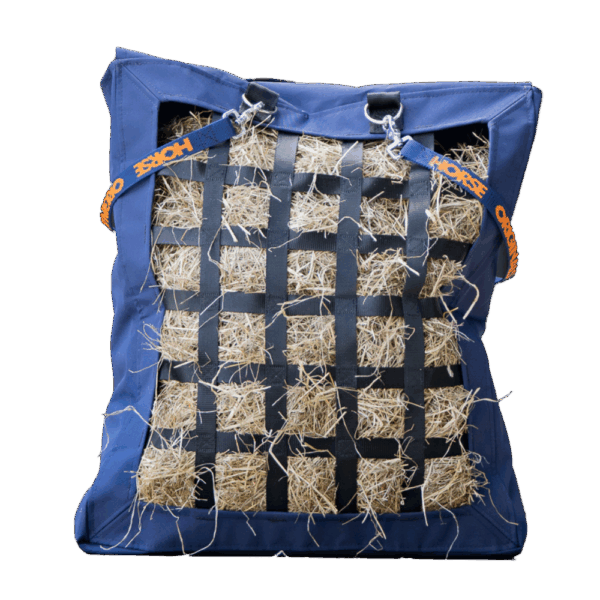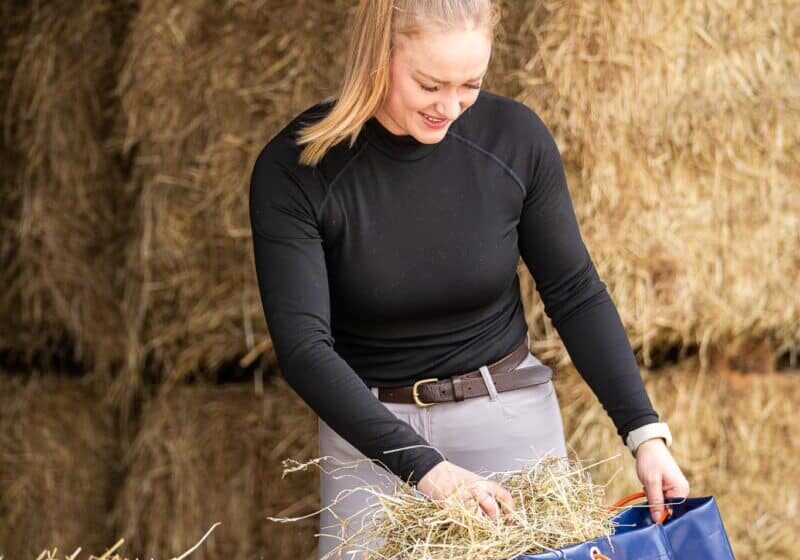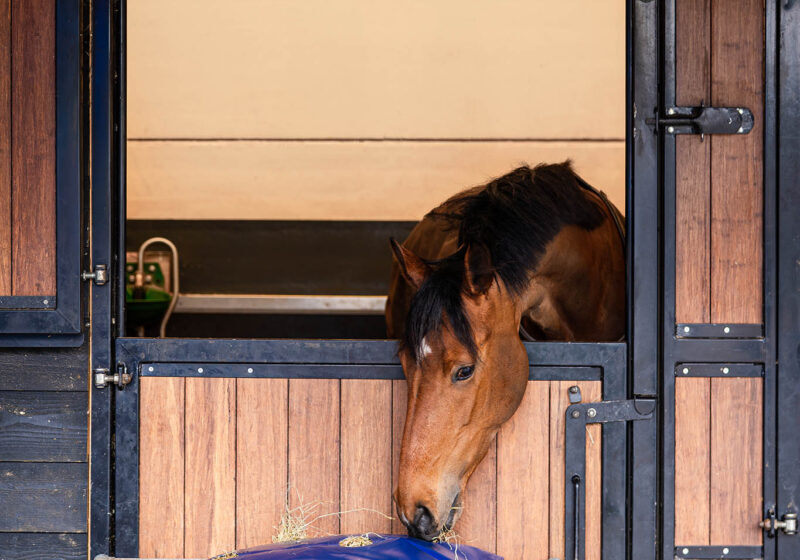Grovfoder för varje häst
Varför grovfoder är grunden i varje hästs foderstat
En frisk häst börjar med grovfoder av hög kvalitet. Oavsett om din häst är tävlingshäst, hobbyrids eller pensionerad hagkompis, är grovfoder nyckeln till god matsmältning, stabil vikt och mentalt välmående. I den här artikeln förklarar vi varför grovfoder är så viktigt, vad du ska tänka på och hur du utfodrar på rätt sätt.
Vad är egentligen grovfoder?
Grovfoder omfattar alla fiberrika fodermedel som hö, gräs, hösilage och lucern.
Dessa fibrer är livsviktiga för hästens matsmältningssystem – de håller tarmen aktiv och hjälper till att förebygga problem som kolik och magsår.
Hur mycket grovfoder behöver en häst?
Som tumregel behöver en häst cirka 1,5–2 % av sin kroppsvikt i torrsubstans från grovfoder per dag. För en häst som väger 600 kg motsvarar det ungefär 9–12 kg hö beroende på torrsubstans. Detta är dock bara en riktlinje – faktorer som ålder, aktivitetsnivå, hälsa och säsong påverkar behovet.
Även hästar som inte tränas behöver tillräckligt med grovfoder. Deras matsmältningssystem är byggt för att ständigt bearbeta små mängder fiberrikt foder under hela dygnet.
Varför grovfodrets kvalitet spelar roll
Allt hö är inte likadant. Näringsvärdet i grovfoder varierar beroende på:
- Skördetidpunkt
- Gödsling och fröblandning
- Torrsubstanshalt
- Protein-, socker- och fiberinnehåll
- Lagringsförhållanden
Tidigt skördat hö innehåller ofta mer energi, protein och socker, medan senare skördar är mer fiberrika men näringsfattigare.
För bästa resultat – särskilt för hästar med specifika behov eller hälsoproblem – bör du låta analysera ditt grovfoder så att du vet exakt vad du fodrar med.
Risker med för lite eller grovfoder av dålig kvalitet
Att ge för lite eller näringsfattigt grovfoder kan leda till allvarliga problem som:
- Magsår – från långa perioder utan mat
- Kolik – på grund av låg tarmaktivitet
- Tristess och olater – som krubbitning eller vävning
- Viktproblem – både under- och övervikt beroende på fodrets kvalitet
En häst bör aldrig gå längre än 4 timmar utan grovfoder.
Så utfodrar du grovfoder på rätt sätt
Hästar är naturligt långsamma betare. I det vilda tillbringar de upp till 16 timmar per dag med att äta små mängder foder.
Du kan efterlikna detta naturliga beteende genom att:
- Erbjuda hö i mindre portioner flera gånger om dagen
- Använda slowfeeders, som förlänger ättiden och minskar spill
Det ger en jämnare matsmältning, minskar stress och förebygger tristess.
Grovfoder är inte ett tillskott – det är grunden
Kort sagt: grovfoder är inte ett komplement, det är själva basen i hästens näring.
Det håller tarmen frisk, bidrar till stabil kroppskondition och förebygger både fysiska och mentala problem.
Välj rätt kvalitet, rätt mängd och använd smarta verktyg som slowfeeders för att göra utfodringen så naturlig och hälsosam som möjligt.
Horse Originals Tips
Våra HayPlay Slowfeeders är särskilt utvecklade för att efterlikna hästens naturliga betesbeteende.
De skapar lugn i flocken, minskar spillet och håller hästen mentalt stimulerad.
Author

Anneke Hallebeek
Equine Nutrition Advice Veterinarian, nutrition specialist, and editor-in-chief for equine nutrition at Paardenarts.nl
Share this article
Producthighlight
HayPlay Bag – SMALL
kr 83,75- Perfekt för släpvagn eller lastbil.
- Utmärkt för uppställning på betesmark.
HayPlay ButtonBag MEDIUM
kr 113,75- Uppmuntrar till att äta med huvudet nedåt
- Bättre för nacke och rygg.
Related Articles
Shop our slowfeeders
Tailored feeding starts with the right forage choice.
Choose peace of mind, health and convenience.
Find out how the HayPlay Bag makes your stall smarter.
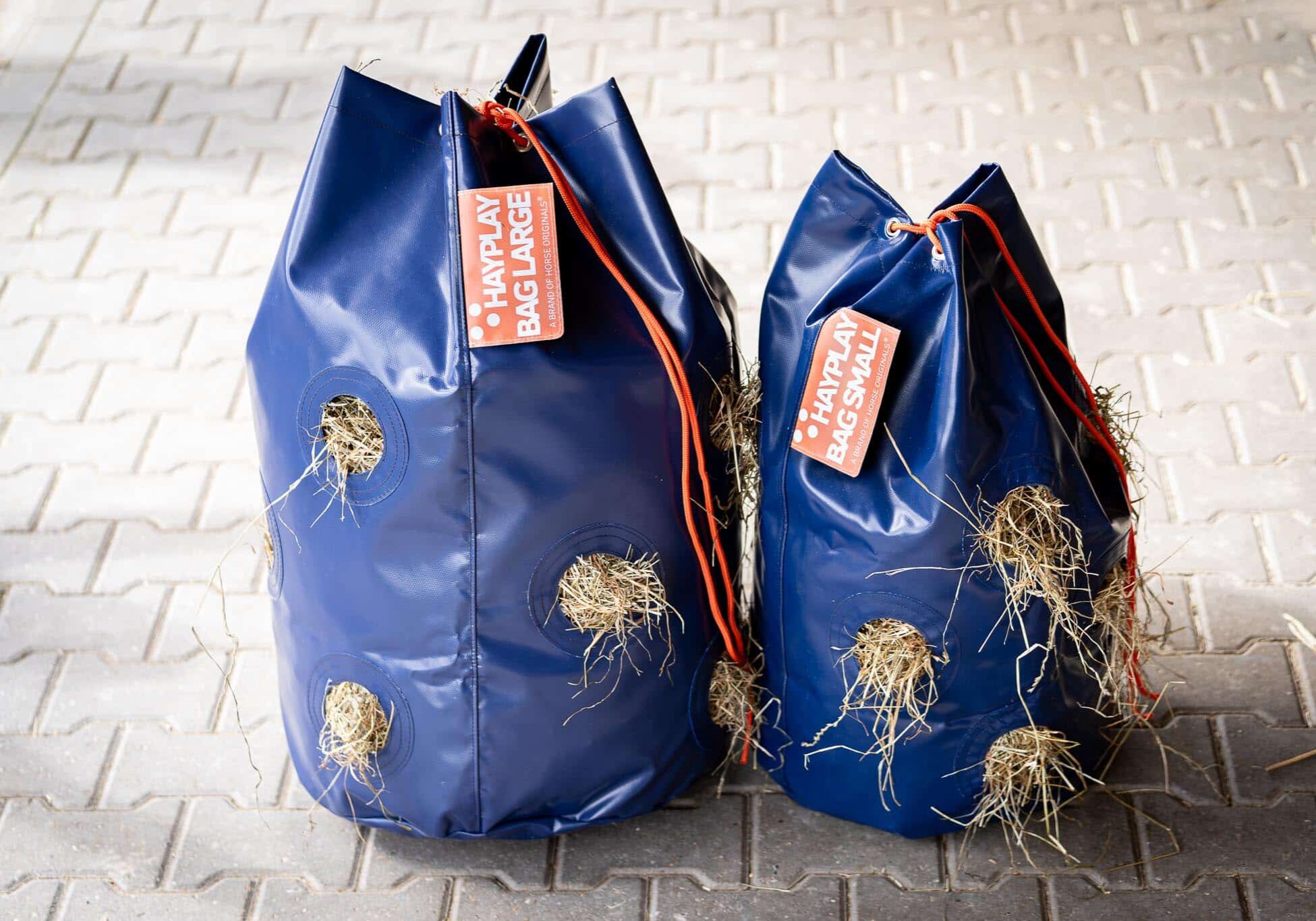
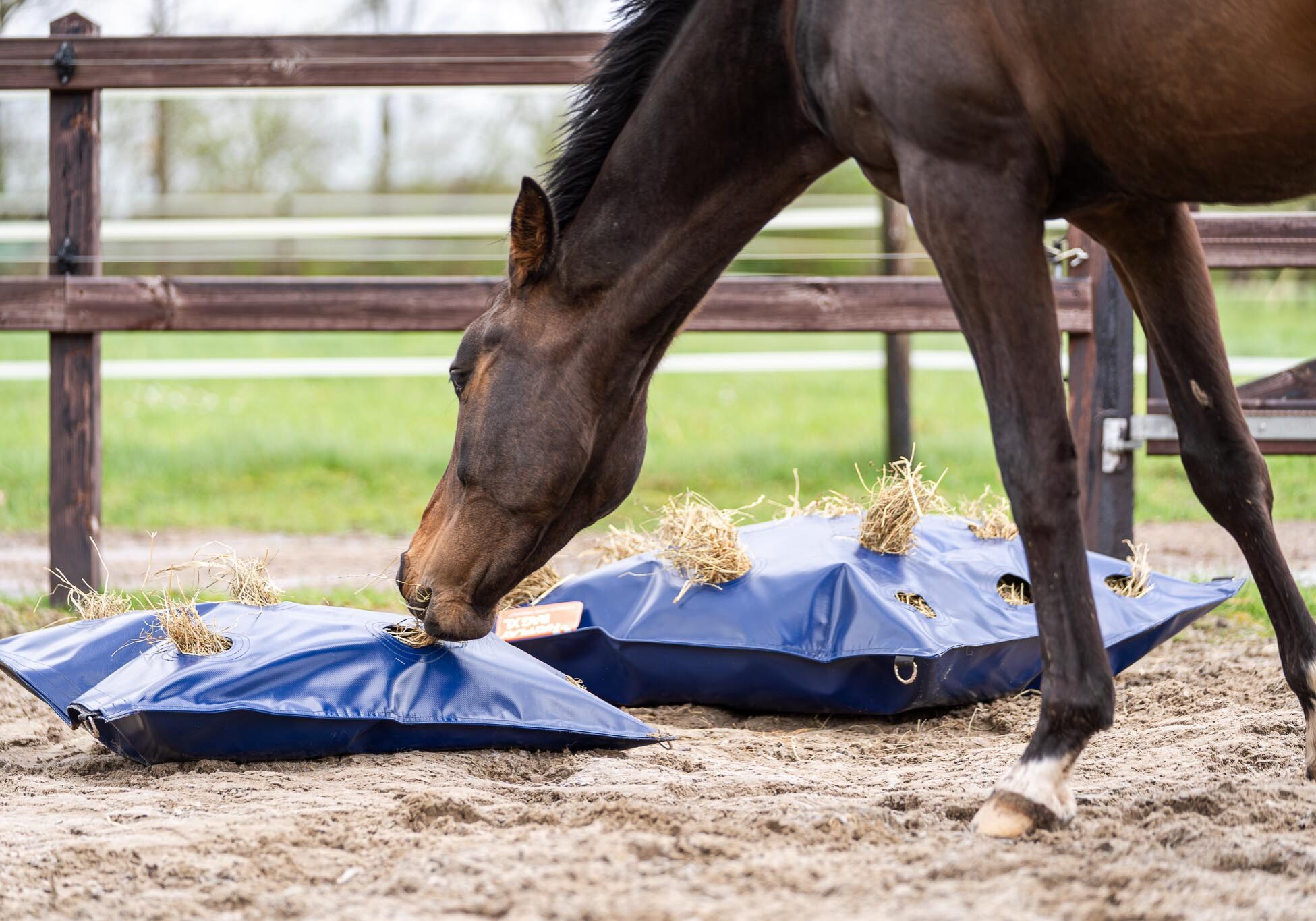
Forage Intake Optimization
Horse Originals Tip
Our slow feeders are designed to optimize the intake of all types of forage from low- to high-energy.
